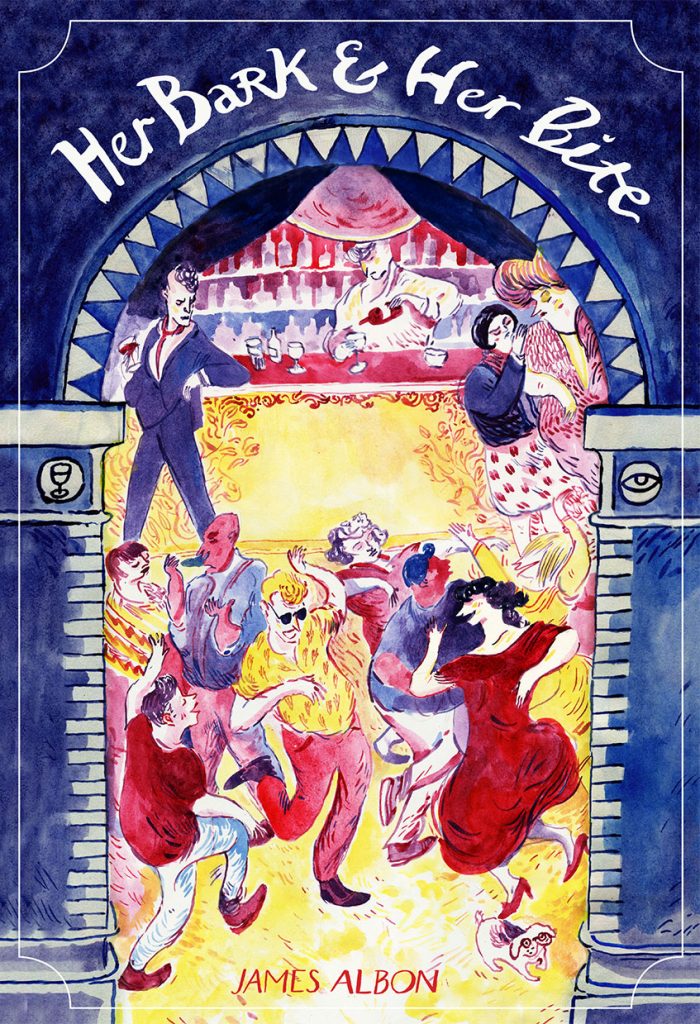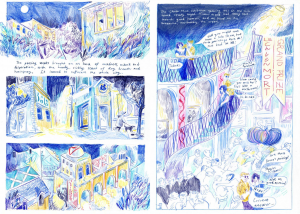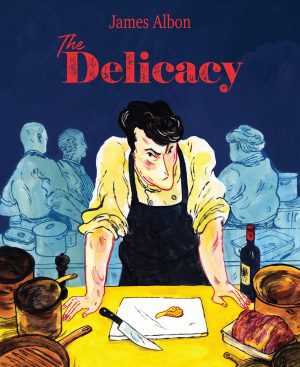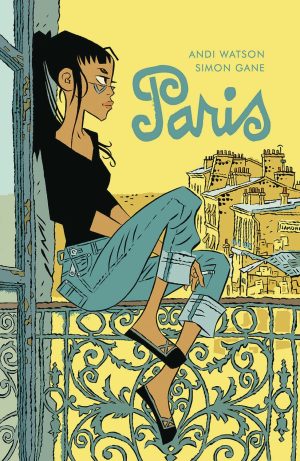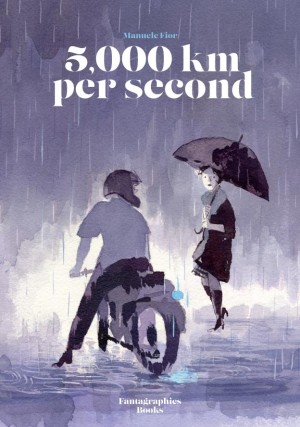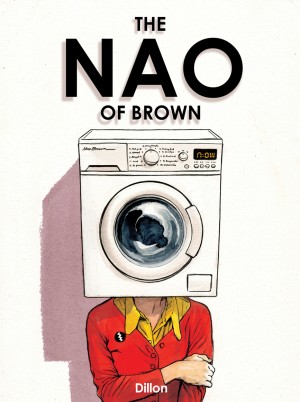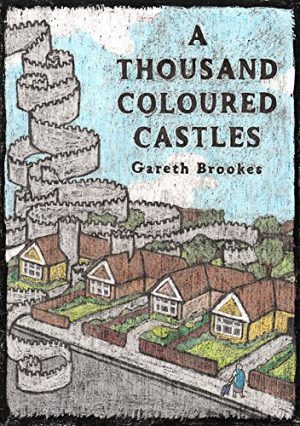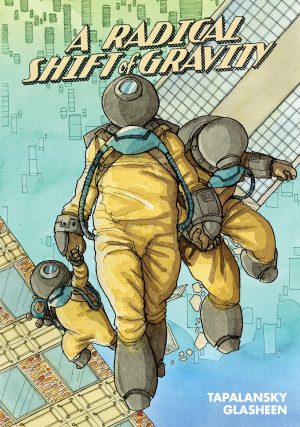Review by Graham Johnstone
James Albon is a talented illustrator, published in The Guardian and elsewhere. Her Bark & Her Bite is his first graphic novel. As the title hints, it’s the story of a woman, and the rival for her boyfriend’s affections – his dog.
Rebecca is an artist living across the Channel in Lyons, initially with an off-stage cousin, who tolerates her in the apartment, but not her hobby. Soon she meets charming party animal Victor – a performance-artist-cum-poet – who’s always jumping to the next new trend without ever having much to show from the previous one. They fall for each other, and (apparently very quickly) move in together, at which point the cousin disappears entirely. There’s a lengthy honeymoon period, where her biggest problem is the amount of parties (poor thing), though his waspish friends are cool towards her.
This lack of both complication to their coming together, and conflict in their being together, suggests inexperience as a writer. Even the pooch, as the love rival and central conflict, doesn’t appear until well after the half-way mark. There are some character insights, but these are mostly told through the narration and dialogue, rather than revealed through action. Where Albon does deliver as a writer, is in the surprise ending (literally) pulled out the bag. This picks up an almost forgotten thread to witty and shocking effect. However, Victor’s revelation and reaction don’t convince. Albon, like Rebecca, is an artist abroad in France, so seems likely to be drawing on real life, in which case a more straightforward, journal comic might have made better use of his talents.
Albon has a loose, expressive art style that channels illustrators likes Quentin Blake, and recalls comics artists Carol Tyler and Frank Stack. Here he renders in coloured pencil, a medium rarely used to great effect. Albon at least does something different by using colour for the lines themselves, and not just the spaces between them, and his trademark confident, flowing strokes shine through. Backgrounds tend to be drawn in single pencil colours without the overlaying and blending, of comics’ other coloured pencil devotee Raymond Briggs. Every page is busy with marks stark against the white stock. This effect could have been reduced by an off-white paper colour easily added in Photoshop. The effect is further exaggerated by adherence to a limited palette of primary colours, plus indigo and purple. He does create some stunning images – the technique adding a city-never-sleeps buzz to some brilliantly composed cityscapes and wild parties. Over these eighty busy pages, it becomes exhausting. This is particularly true where you have sequences of similar images, such as talking head sequences, where a flurry of different coloured marks convey, say, Rebecca’s hair, and are a distraction from these quiet character scenes. The featured image is one of the more restrained examples.
Those unfamiliar with Albon’s work might assume that this is his signature technique, and it’s easy to imagine the best images here as glossy magazine spreads, or jazzing up a page of newspaper text. Looking at Albon’s portfolio on his website, though, we find that he doesn’t generally use coloured pencil, and his typically flatter and more sedate colour-schemes look like they would have created a far more appealing graphic novel.
There are some stunning images here, but the palette and pencil rendering prove tiring over a whole book, and the story lacks sufficient human drama. Still, a follow-up with better story planning, and a more restrained art style, would be something to look forward to.
